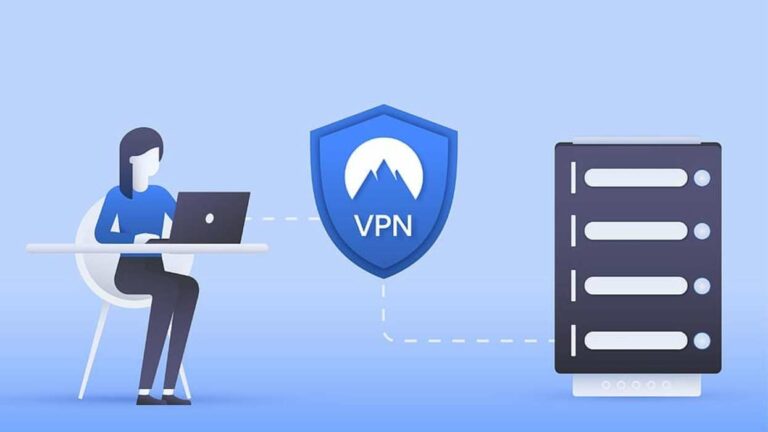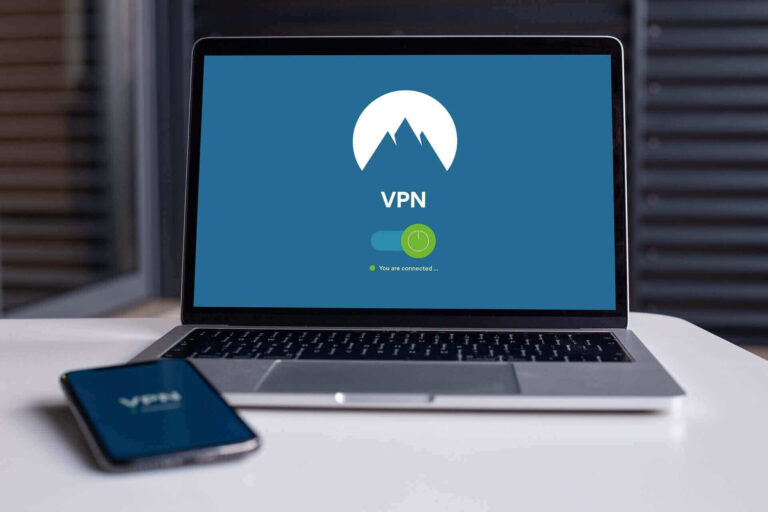16 Most Common Types Of Hacks And Prevention
Here is a look at the most common types of hacks and how to prevent them. Also, find answers to popular questions on the topic.

One of the biggest problems in this internet-dominated era is safety and security. Hackers are always looking for exploits and ways to take advantage of security loopholes to attack. In this article, we will look at the most common types of hacks and how you can protect yourself.
What is hacking?
Hacking refers to the practice of gaining unauthorized access to a computer or network in order to steal, alter, or destroy data or information.
Hackers use various techniques and tools to gain access to systems and networks, and there are many different types of hacks that they can use.
Most common types of hacks and prevention
Here are some of the most common types of hacks:
1. Malware
Malware, short for malicious software, is a term used to describe any software that is designed to harm or exploit a computer system. There are many different types of malware, including viruses, ransomware, spyware, and adware. Malware is often spread through email attachments or links to malicious websites.
Once a computer has been infected with malware, it can be used to perform a wide range of malicious activities. For example, malware can be used to steal sensitive information, such as login credentials or financial information, or to launch attacks on other computer systems. Malware can also be used to disable or disrupt a computer’s normal functioning, or to extort money from the victim by encrypting their files and demanding payment in exchange for the decryption key.
To protect against malware, it is important to use security software that is regularly updated to protect against the latest threats. Additionally, users should be cautious when opening email attachments or clicking on links from unknown sources, and should avoid downloading software from untrusted websites. By following these simple steps, individuals and organizations can greatly reduce their risk of falling victim to a malware attack.
2. Phishing
A phishing hack is a type of cyber attack in which the attacker attempts to trick the victim into giving sensitive information, such as login credentials or financial information, by posing as a trustworthy entity. This is typically done through email, social media, or other online platforms.
The attacker may use a fake website or email address that looks legitimate in order to deceive the victim. Once the victim has entered their sensitive information, the attacker can then use it for their own malicious purposes, such as identity theft or financial fraud.
The best ways to protect against Phishing are to always cross-check and be sure you are browsing an authentic website, avoid opening unsolicited emails and use two-factor authentication. And never forget to check the sender’s email to be sure it is official.
3. SQL injection
SQL injection is a type of cyber attack in which an attacker injects malicious code into a website’s database, allowing them to access, modify, or delete sensitive information. This is typically done by adding malicious code into user input fields, such as a login form, in order to trick the website into executing the code as if it were legitimate.
To protect against SQL injection attacks, it is important to properly validate and sanitize all user input before passing it to the database. This can be done using prepared statements or parameterized queries, which ensure that the input is treated as data rather than code. It is also important to use strong, unique passwords for the database and to regularly update the website’s software and security patches.
4. Man-in-the-middle (MITM)
A man-in-the-middle (MITM) hack is a type of cyber attack in which the attacker intercepts and alters communications between two parties. This is typically done by positioning the attacker’s device between the two parties and redirecting their communications through the attacker’s device. This allows the attacker to see and potentially modify the communications between the two parties without their knowledge.
MITM attacks can be difficult to detect, as the parties involved in the communication may not realize that their messages are being intercepted and altered.
To protect against MITM attacks, it is important to use encryption and secure communication protocols whenever possible.
This makes it much more difficult for an attacker to intercept and alter the communication without being detected. It is also important to be cautious when using public Wi-Fi networks and to avoid accessing sensitive information over unsecured connections.
5. Denial of service (DoS)
A denial of service (DoS) attack is a type of cyber attack in which the attacker attempts to make a website or network resource unavailable to users.
This is typically done by overwhelming the website or network with traffic, effectively preventing legitimate users from accessing the resource. DoS attacks can be very disruptive and can cause significant financial damage to the affected organizations.
To protect against DoS attacks, it is important to have robust network security measures in place, such as firewalls and intrusion detection systems. These can help to identify and block suspicious traffic before it can overwhelm the website or network.
It is also important to have adequate bandwidth and infrastructure in place to handle large amounts of traffic, as this can help to prevent the website or network from becoming overwhelmed. Regularly updating software and security patches can also help to protect against DoS attacks, as these can often exploit vulnerabilities in outdated software.
6. Distributed denial of service (DDoS)
A distributed denial of service attack is similar to a DoS attack, but it involves using multiple computers or devices to generate the traffic.
The attacker uses multiple devices, often spread across different locations, to simultaneously attack a website or network resource.
This allows the attacker to generate a much larger amount of traffic than would be possible with a single device, making it more difficult for the website or network to defend against the attack. DDoS attacks can be very disruptive and can cause significant financial damage to the affected organizations.
To protect against DDoS attacks, you should have good network security measures in place, such as firewalls and intrusion detection systems. These can help to identify and block suspicious traffic before it can overwhelm the website or network.
It is also important to have adequate bandwidth and infrastructure in place to handle large amounts of traffic, as this can help to prevent the website or network from becoming overwhelmed.
Additionally, using a DDoS protection service can help to absorb and deflect the incoming traffic, making it much more difficult for the attacker to succeed. A good example is Cloudflare.
7. Password cracking
Password cracking is a technique used by attackers to gain unauthorized access to a computer system or online account. This is typically done by using specialized software to guess or “crack” the password, either by trying a pre-determined list of common passwords or by using more advanced methods, such as dictionary attacks or brute force attacks.
To protect against password cracking, it is important to use strong, unique passwords for each of your accounts. This means using a mix of upper and lower case letters, numbers, and special characters, and avoiding using common words or phrases.
It is also a good idea to use a password manager to help you generate and store strong, unique passwords. Additionally, regularly changing your passwords can help to further protect your accounts, as this makes it more difficult for attackers to crack your password using pre-determined lists or other methods.
8. Zero-day exploit
A zero-day exploit is a type of cyber attack that takes advantage of a previously unknown vulnerability in a computer system or software application. This means that the vulnerability has not been publicly disclosed or patched, and the system or application is therefore vulnerable to attack. Zero-day exploits can be particularly dangerous, as they can be difficult to detect and can allow the attacker to gain access to the system or application without the user’s knowledge.
To protect against zero-day exploits, it is important to keep all of your software and systems up to date with the latest security patches.
This can help to close any known vulnerabilities and make it more difficult for attackers to exploit them. It is also important to use security software, such as antivirus and intrusion detection systems, to help identify and block potential zero-day exploits.
Additionally, regularly backing up your data can help to minimize the impact of a successful zero-day exploit, as you will be able to restore your data from the backup if necessary.
9. Bait and Switch
The bait and switch is a common scamming tactic in which the attacker lures the victim into a situation with the promise of something attractive, but then switches the terms of the deal at the last minute to the victim’s disadvantage. This can be done in a variety of ways, but the common thread is that the victim is deceived into believing that they are getting one thing, when in fact they are getting something else entirely.
One example of a bait and switch scam is a fake job listing. The attacker may advertise a high-paying job with excellent benefits, but when the victim shows up for the interview, they are told that the job is actually commission-based and that the benefits are not as good as advertised. Another example is a fake online sale, in which the attacker advertises a product at a greatly discounted price, but when the victim tries to purchase the product, they are told that it is out of stock and are instead offered a more expensive product.
To protect against bait and switch scams, it is important to be cautious of offers that seem too good to be true. Always do your research and verify the legitimacy of the offer before giving out personal information or sending money.
It is also a good idea to be wary of unsolicited offers, especially those that come through email or social media, as these are often used by attackers to target victims. If you suspect that you may have fallen for a bait and switch scam, contact the appropriate authorities and take steps to protect your personal information.
Cookie theft, also known as session hijacking, is a type of cyber attack in which the attacker steals the victim’s login session cookie and uses it to gain unauthorized access to the victim’s online accounts. Cookies are small pieces of data that are sent from a website to the user’s web browser and stored on the user’s computer. They are often used to store login information, so that the user doesn’t have to enter their username and password every time they visit the website.
To steal a cookie, the attacker first needs to find a way to access the victim’s computer, such as by sending the victim a malicious email attachment or by exploiting a vulnerability in the victim’s web browser. Once the attacker has access to the victim’s computer, they can search for the login session cookie and copy its value. They can then use this value to impersonate the victim and gain access to the victim’s accounts.
To protect against cookie theft, it is important to use strong, unique passwords for each of your online accounts, and to avoid using the same password across multiple accounts. Additionally, you should regularly update your web browser and other software, as this can help to protect against vulnerabilities that attackers may try to exploit. Finally, you should be cautious about accessing your online accounts over public Wi-Fi networks, as these can be easily monitored by attackers.
11. Clickjacking
Clickjacking is a type of cyber attack in which the attacker tricks the victim into clicking on a button or link that has a different function than the victim expects. This is typically done by using transparent or overlaid images to disguise the true destination of the button or link.
For example, the attacker may place a transparent image of a “play” button over a link to a malicious website, tricking the victim into thinking that they are clicking on a video player when in fact they are visiting the malicious website.
To protect against clickjacking, it is important to be cautious when clicking on buttons or links, especially those that come from unfamiliar or untrustworthy sources. You should also avoid clicking on links or buttons that appear out of place or that don’t seem to match the content of the page.
Additionally, you can use web browser plugins or extensions that can help to identify and block potential clickjacking attempts. Finally, you should regularly update your web browser and other software to ensure that you have the latest security patches and protections against clickjacking and other cyber attacks.
12. Keylogger
A keylogger is a type of software or hardware that records the keys that are pressed on a keyboard. This information can then be used by an attacker to learn a person’s login credentials, passwords, and other sensitive information. Keyloggers can be installed on a person’s computer without their knowledge, often through the use of malware or other malicious software.
To protect against keylogger attacks, it is important to use strong, unique passwords for each of your online accounts, and to avoid using the same password across multiple accounts.
Additionally, you should regularly update your antivirus software and run scans to identify and remove any malware or other malicious software that may be installed on your computer. You can also use a virtual keyboard to enter your passwords, as this can make it more difficult for a keylogger to capture your keystrokes.
Finally, you should be cautious about downloading and installing software from unknown or untrustworthy sources, as this can often be a way for attackers to install keyloggers on your computer.
13. Backdoor attack
A backdoor is a hidden entry point into a computer system or software application that is intentionally created by the developer. This entry point can be used to gain access to the system or application without going through the usual authentication processes.
Backdoors are often used by developers to provide themselves with a way to access the system or application in case of emergency, but they can also be exploited by attackers to gain unauthorized access.
To protect against backdoor attacks, it is important to regularly update your software and operating system to ensure that any known backdoors are closed. You should also use security software, such as antivirus and intrusion detection systems, to help identify and block any attempts to access the system or application through a backdoor.
Additionally, you should be cautious about downloading and installing software from unknown or untrustworthy sources, as this can often be a way for attackers to install backdoors on your system. Finally, you should avoid using software or applications that have known or suspected backdoors, as this can leave your system or data vulnerable to attack.
14. Brute force attack
A brute force attack is a type of cyber attack in which the attacker tries to guess a password or other login credentials by systematically trying every possible combination of characters. This is typically done using specialized software that can automatically generate and try large numbers of combinations in a short amount of time. Brute force attacks can be effective, but they can also be time-consuming and may be detected by security systems.
To protect against brute force attacks, it is important to use strong, unique passwords for each of your online accounts. This means using a mix of upper and lower case letters, numbers, and special characters, and avoiding using common words or phrases.
It is also a good idea to use a password manager to help you generate and store strong, unique passwords. Additionally, regularly changing your passwords can help to further protect your accounts, as this makes it more difficult for attackers to crack your password using brute force methods.
Finally, you should be cautious about entering your login credentials on unfamiliar or untrustworthy websites, as these may be more likely to be targeted by brute force attacks.
15. DNS spoofing
DNS spoofing, also known as DNS cache poisoning, is a type of cyber attack in which the attacker tricks a DNS (Domain Name System) server into directing users to a malicious website instead of the intended website. This is typically done by sending the DNS server fake DNS records that associate the malicious website with the intended website’s domain name. When a user tries to visit the intended website, the DNS server sends them to the malicious website instead, allowing the attacker to potentially steal sensitive information or infect the user’s device with malware.
To protect against DNS spoofing attacks, it is important to use secure DNS servers that are less susceptible to spoofing attempts. You can also use DNS filtering services, which can help to identify and block malicious websites by comparing their DNS records against known safe websites.
Additionally, you should regularly update your operating system and other software to ensure that you have the latest security patches and protections against DNS spoofing and other cyber attacks. Finally, you should be cautious about entering sensitive information, such as login credentials or financial information, on unfamiliar or untrustworthy websites, as these may be more likely to be targeted by DNS spoofing attacks.
16. Malvertising
Malvertising is a type of cyber attack in which the attacker uses advertising networks to deliver malicious advertisements to users. These advertisements may contain hidden code that, when clicked on or interacted with, can download malware onto the user’s device or redirect them to a malicious website. Malvertising can be difficult to detect, as the advertisements often look legitimate and are delivered through trusted advertising networks.
To protect against malvertising attacks, it is important to use reputable and trustworthy advertising networks, as these are less likely to be used to deliver malicious advertisements. You should also regularly update your web browser and other software to ensure that you have the latest security patches and protections against malvertising and other cyber attacks.
Additionally, you should be cautious about clicking on advertisements, especially those that come from unfamiliar or untrustworthy sources, as these may be more likely to contain malicious code. Finally, you should use security software, such as antivirus and intrusion detection systems, to help identify and block potential malvertising attempts.
Conclusion
Overall, these are some of the most common types of hacks that are used by attackers to gain access to systems and networks. It is important for individuals and organizations to be aware of these types of attacks and to take steps to protect themselves from them.
Frequently Asked Questions (FAQs)
What are the different types of hackers?
There are several different types of hackers, each with their own motivations and methods. Some common types of hackers include:
1. White hat hackers, who are ethical hackers who use their skills to identify and help fix vulnerabilities in computer systems.
2. Black hat hackers, who are criminals who use their hacking skills for personal gain or to cause harm.
3. Grey hat hackers, who are somewhere in between white and black hat hackers, and may use their skills for both good and bad purposes.
4. Script kiddies, who are inexperienced hackers who use pre-existing tools and scripts to carry out attacks, often without understanding how they work.
5. Nation-state hackers, who are sponsored by governments to carry out cyber espionage or cyber warfare operations.
While all hackers use similar techniques, their motivations and goals can be vastly different. Some hackers may be motivated by money, while others may be motivated by political or ideological beliefs. Still others may be motivated by the challenge of breaking into a system or by the notoriety that comes with being a successful hacker.
What types of hacking is legal?
Ethical hacking which is also known as White hat hacking is done legally.
Outside of ethical hacking, in general, hacking is illegal. Hacking is the unauthorized access to or control of a computer or network. It is a criminal offense that can result in severe penalties, such as fines and imprisonment.


